Customer: “Waitress, there’s a worm on my plate!”
Waitress: “I am very sorry sir … There should at least be twenty!”
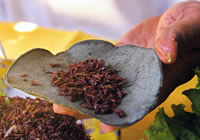
A delicious curiosity of Mexico’s cuisine and its pre-hispanic origin is unquestionably the consumption of an incredible variety of edible insects in various forms and shapes. Either in a single taco or as a juicy meat stew with vegetables, chili, and herbs.
Some insects have been cataloged, since time immemorial, among the most popular and precious Mexican delicacies. In many Mexican regions and cities, in homes, markets, and even in the most refined and expensive gourmet restaurants, it is very common to see people enjoying tasty tacos of crisp Maguey worms, tangy locusts, juicy ant eggs, and, the bravest, the very much alive and crawling jumiles.
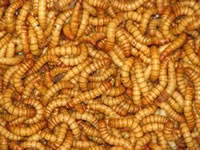
Even for some cultures, it is not only extravagant, but also repulsive to even think about eating insects, in most of the world’s cultures, entomophagy been an ancient and delightful custom. Insects have been a part of human diet since our first ancestors roamed the earth, for they are a rich and abundant source of protein and calories not only during difficult periods of glaciation, but also during drought and floods, or in times of relatively stable climatic conditions as those we have experienced over the past 20,000 years.
Scientific research shows that the there could be up to 100 million species on our planet, of which less than 2% are currently classified. Within this huge and largely unknown universe of living creatures, about 80% of them all are insect species. Furthermore, insects have inhabited our planet for around 450 million years, an impressive figure if we compare it with the insignificant 3.5 million years since our first ancestors appeared on the face of the Earth. This means that we surely know almost nothing about insects and, of course, on the numerous applications in science, medicine, and, yes, even for human nutrition.
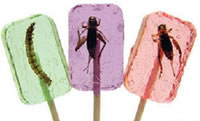
The positive nutritional aspects of eating insects are surprising. Approximately 50-75% of the body weight consists of human-digestible protein, which is, moreover, of a very high quality, especially if combined with other nutrients. Furthermore, many insects eat substances that would otherwise not be easily digested by humans, making them an important source of alternative nutrients for people. In nutritional terms, insects have the eight amino acids essential for adult nutrition and the nine necessary for children.
Entomophagous (Insect-eating) Cultures
Through the centuries there have been many cases of entomophagous cultures. It is said that John the Baptist managed to survive in the desert eating locusts and honey. For the Egyptian pharaohs, beetles were a delightful delicacy and an extraordinary source of fat. On their famous banquets, the Roman emperors and aristocrats ate locusts in honey and woodworms. Cicadas were also quite a treat for the Ancient Greeks. In today’s modern Japanese, water beetles are a delicacy.
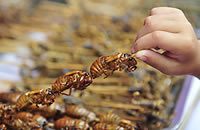
To the Chinese, the grasshoppers, silkworm chrysalis, and cicadas are delicious. And even in the USA, where you could think entomophagy has never been practiced, there are numerous examples of indigenous tribes whose diets contained insects like grasshoppers, ants, and caterpillars. And we could go on and on, and mention practically every corner of the earth where there is some form of juicy and edible insect.
Edible Insects in Mexico
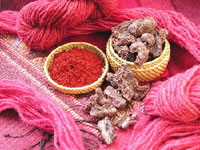
Among the people who have considered insects an important part of their daily life and diet, Mexico has a dominant position. According to researcher Julieta Ramos-Elorduy, of the 3,169 edible insect species that are recorded worldwide, 457 (almost 15%) are eaten in Mexico.
Many centuries before the arrival of the Spaniards into the territory of today’s Mexico, insects have been used for different purposes by the various cultures that lived in the area. Particularly noteworthy is the use of Cochenille as a dye and silkworms in the Central Valleys of Oaxaca.
Insects have also engaged a relevant place in the magical beliefs of the indigenous population. Thanks to the observation the habits of a humble ant, Quetzalcoatl, the main God in the Mesoamerican pantheon, taught the people how to store their corn, the main food of that civilization.
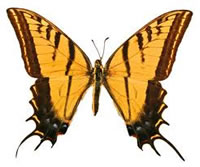
If a symbol were to be chosen, that integrated all the faiths of Ancient Mexico, it would undoubtedly be a specific insect: a butterfly. For the people of Teotihuacan, for example, the Papilio daunus butterfly, which they called Xochiquetzal, was considered to be the very soul. For the Aztecs, butterflies represented the quest of human beings to god-like immortality, a beautiful symbol of the metamorphosis of the body and spirit.
All Mesoamerican groups and civilizations have recognized the sacred qualities of the insects. The chapulines or grasshoppers, which are related to the delicious shrimp and highly regarded marine lobsters were called “divine flowers of God” by the Mayans. The Lacandon people in Chiapas rainforest call the cocoons of the stem-boring beetles “small virgins”. The Huichol or Wixarika people, who live in mountainous areas of the States of Nayarit, Colima, and Jalisco, certain species of wasps carry the dead souls to the world beyond.
Aztecs, insatiable Insect Consumers
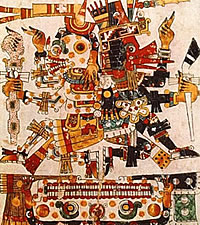
The proud and refined Aztecs easily forgot their Chichimec past, nomadic, barbaric and brutal, and the hardships they suffered during 300 years of pilgrimage from Aztlán, their place of origin, to Mexico-Tenochtitlan, their promised land, where they settled for good. Famous for their survival skills (insect-men in many a way), before they became an empire they were oppressed and denied, their tribes had to live in the Anahuac valley’s most inhospitable places, such as snake-infested Coatepec, or Chapultepec, a hill overrun by a plague of grasshopper or chapulínes (the name derived from it). In both cases the solution to this reptile and insect invasion came from their not very picky sense of taste, transforming the insects into an edible ingredient in their increasingly varied and sophisticated food diet.
Insects a cure for many diseases
For generations, insects are used in Mexican traditional medicine to treat a variety of diseases. The Firefly and other insects that shine during the night are used to cure liver diseases, the jaws of carrier ants have been used by the Mayans as a cure for wounds, thanks to the antibiotic substances they contain; the black cricket from Veracruz, used to combat vitamin deficiency, honey ants to relieve fever, jumiles as an anesthetic and analgesic. Bees are also favorites, both for their venom, used to cure arthritis and rheumatism, and diverse features of the honey they produce used to heal wounds and cure throat related diseases, eyes, lungs and digestive system too.
Off the frying pan and into the mouth
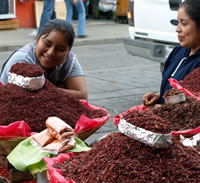
Within the varied and complex Mexican cuisine, by definition, a mix of cultures, the use of edible insects is a trip back to the Mexican indigenous gastronomic origin.
Basically, insects are still consumed in the same way as they were before the European invasion, and the regions where they are more often eaten today is mainly in the states of Hidalgo, Chiapas, Oaxaca, Guerrero, Puebla and Yucatan.
After cleaning and cooking them, insects are usually eaten either toasted or as ingredients in a taco. Grasshoppers continue to be eaten this way today, especially in Oaxaca. Some insects can be ground if they have a stronger flavor and are therefore mixed with herbs and spices so they can be used a source of varied and original flavors.
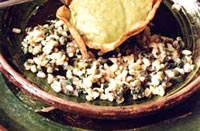
Other insects are eaten alive, jumiles a variety if oak tree insects and the delicious honey ants or necuazcatl (by its Aztec name), that miraculously carry a small drop of honey within their bodies. Larvae of dragonflies, wasps, and water bugs, also known ahuauhtli, like that of the black ants, called azcatlmolli or escamoles are also eaten.
Different types of worms are also part of the local diet. The most highly prized were and continue to be, the Maguey white worm, called meocuilin, which is the larva of a nocturnal butterfly that grows in the Maguey leaves. This is much tastier and more expensive than a second worm, also very popular, that lives in the heart of the same plant, colored red and with a less delicate flavor, called chinicuil.
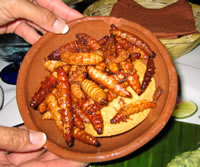
It’s been a long time since Maguey white worms have conquered the tables and kitchens of the most expensive gourmet restaurants in Mexico and other parts of the world. The popular tradition has become a fashion. Even in countries where edible insects once were viewed with horror, have luxury restaurants specializing in edible insects and other food Mexican cuisine delicacies have appeared, including the famous The Insect Club in Washington DC., which opened its doors in 1994.
Edible insects are therefore an excellent gastronomic option, and just a few decades ago what would have been a crazy rarity are now a visionary reality. Today there are a number of successful Mexican companies, some led by indigenous groups from the States of Puebla and Oaxaca, that produce, package and export grasshoppers, ant eggs, and Maguey worms.
To many, more than a profitable culinary exoticism, consuming insects is a promising culinary option. For those who need food from fat-free proteins, or are suffering from heart disease or high cholesterol, insects may become their nutritional future.
From Taco to Taco
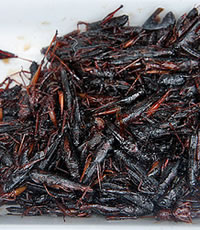
Although it is now possible to purchase dehydrated locusts in the supermarket, the truth is that nothing can compare with the experience of enjoying these edible insects or the exquisite dishes made with them in situ. Some are available 365 days a year in San Juan Market, in the heart of Mexico City, or in the markets in the city of Oaxaca.
And a wide variety of insects can be tasted every April at the Mezquital Valley Gastronomic Fair, held in Santiago de Anaya, Hidalgo: A surprise party for the tongue where you can just as easily eat tepezcuintle (Spotted Paca) in tamales or escamoles or ant eggs in mixiote or in maguey leaves, woodworms with nopales (prickly pear leaves), or garlic grasshoppers.
Don’t forget about the delicate and crawly jumiles with salt and lime, a culinary tradition of Taxco, Guerrero. There, on the Monday after the Day of the Dead, you can enjoy and celebrate the day of the Holy Jumil. Families visit Huixteco Hill to gather, show their respect, and eat jumiles, which they consider to be the reincarnation of their ancestors. That is why it is common to hear among the inhabitants of the region the question: Are you carrying family? When they want to know if someone has jumiles.
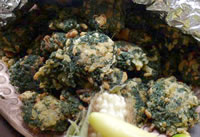
Another delicacy is ahuautle, the small eggs of an aquatic fly that is common in Lake Texcoco, neighboring Mexico City and has been called the Mexican caviar. Made into patties with green sauce, it is the most popular delicacy in Tzapotitlan, State of Mexico.
And what about the regional markets in Oaxaca, where it is common to find baskets full of grasshoppers. Large and small, crispy and with lime and salt, ready to be eaten as an appetizer with a shot of mezcal?
From taco to taco, with their delicate or strong taste, crunchy or slimy, alone or as an ingredient in a stew, edible insects in Mexico, for many are the best and tastiest feature of Mexican national cuisine.
Article on the local Puerto Vallarta dishes
Last Updated on 21/02/2021 by Puerto Vallarta Net



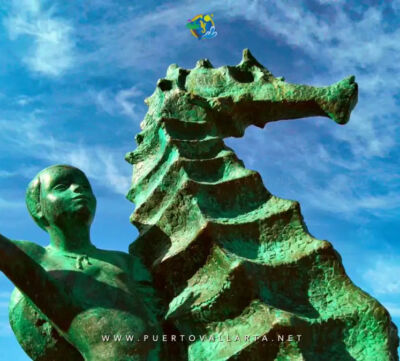






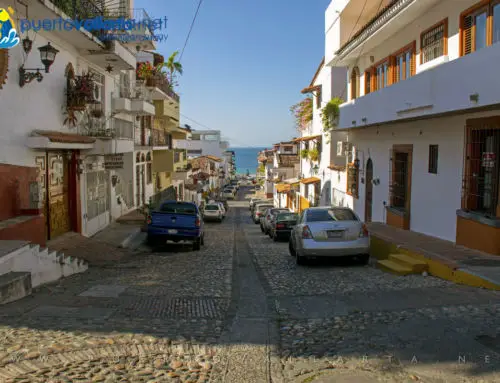



Leave A Comment